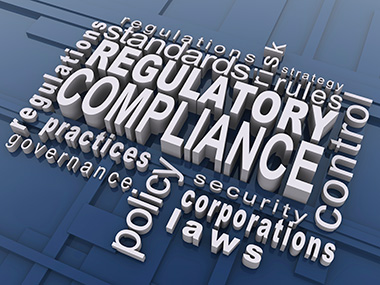LEIE: Do You Know About the List of Excluded Individuals and Entities?
The Exclusions Statute is one of five major federal fraud and abuse laws. Exclusion is an administrative remedy that is in the form of a penalty imposed on a provider. You may have never heard of it or have only recently become aware of it, but Congress first mandated exclusion of practitioners convicted of program related crimes from participation in Medicare and Medicaid in 1977.
Sections 1128 and 1156 of the Social Security Act provide authority to the Office of the Inspector General (OIG) to exclude individuals and entities from federal health care programs like Medicare and Medicaid. Individuals may be excluded for reasons that fall into one of two categories: permissive or mandatory. The permissive category includes misdemeanors such as licensure issues or loan obligations. The mandatory category includes felonies and criminal offenses such as Medicare and Medicaid fraud. A mandatory exclusion is for no less than 5 years. Exclusions are applied broadly in both categories. Excluded individuals and entities are prohibited from furnishing all types of services including administrative and management services. Some examples of excluded individuals/services include:
- Prep of surgical trays
- Transportation
- HIT
- Billing
- Filling of prescriptions
The Patient Protection and Affordable Care Act of 2010 along with other statutory amendments have strengthened and expanded the OIG’s authority to exclude individuals and entities from the federal health care programs. On May 8, 2013, the OIG issued an updated special advisory bulletin on the effect of exclusion from federal health care programs. The publication of the original Bulletin in 1999 coincided with the beginning of significant and ongoing OIG initiatives to ensure compliance with and enforcement of exclusions.
It is important for healthcare providers to follow best practices when screening employees. Providers need to routinely check the LEIE to ensure that new hires and current employees are not on the excluded list. Providers have an obligation to screen current and potential employees against the OIG’s LEIE, and a monthly screening is the best way to minimize potential overpayment and Civil Monetary Penalty (CMP) liability. Screening is a relatively simple process that involves entering an individual’s name and completing a search on the OIG Web site . In the event that a provider determines they have employed an individual on the list, they must disclose to the government that they have employed an excluded person. The OIG’s Self-Disclosure Protocol (SDP) may be followed to disclose and resolve the potential of liability. Providers should always maintain documentation of the initial search and any additional searches conducted, in order to verify results of potential matches. First Healthcare Compliance provides automatic monthly screenings of all employees and vendors entered into a client’s account.
Providers that employ an individual that the provider knows or should know is excluded may be subject to CMPs. OIG’s exclusion and CMP authorities impose broad liability for providers. An assessment of up to three times the amount claimed for each item or service may be applied. Additionally, a provider may face exclusion from participating in federal health care programs. The result of exclusion is no payment for items or services furnished, ordered, or prescribed by an excluded individual whether funded directly or indirectly by United States.
For more information please view our webinar List of Excluded Individuals and Entities (LEIE): An Overview with Jennifer Gimler Brady, Esq.

